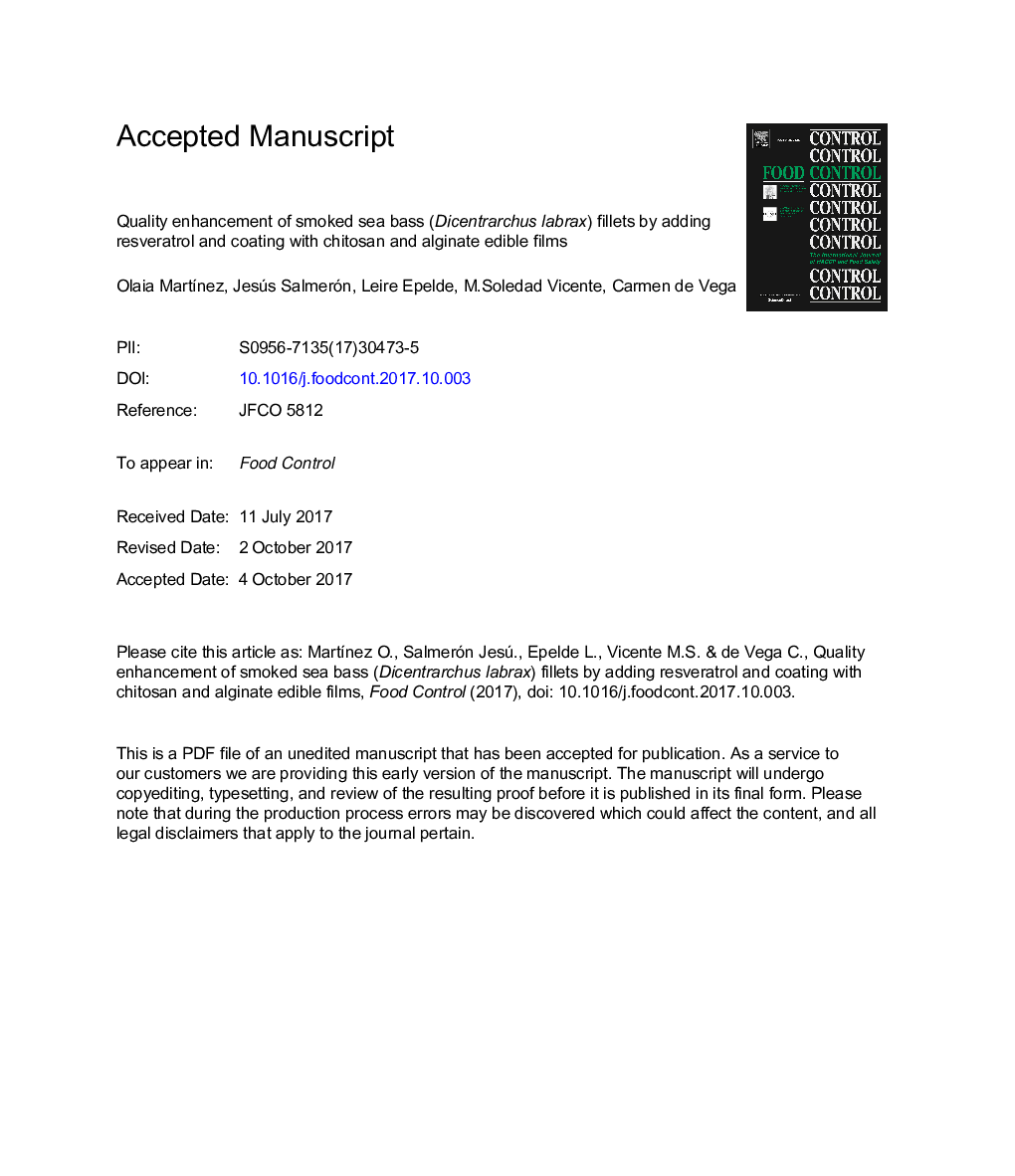| Article ID | Journal | Published Year | Pages | File Type |
|---|---|---|---|---|
| 8888206 | Food Control | 2018 | 36 Pages |
Abstract
Sea bass (Dicentrarchus labrax) were proposed as raw material for valued-added transformed smoked products. Resveratrol powder addition and chitosan and alginate edible coatings were evaluated as possible conservative strategies. There were two experimental stages. Firstly, resveratrol was added superficially on liquid smoked fish. Experimental groups were as follows: U, untreated fillets; B, brine salted fillets; S, brined, salted and smoked fillets and SR1 and SR2 for 2.5 and 5.0 g resveratrol added per fillet, respectively. Secondly, resveratrol was added, after brining, suspended in liquid smoke (20 g/L) which was applied by immersion to the fillets (SR); some of those were also coated with chitosan or alginate (SRQ and SRA). A group of brined and smoked fillets was the control (S). Sensory quality of vacuum packed refrigerated (4±0.5 °C) samples was assessed together with weekly total viable counts, chemical variables (TBARS, TMA) and texture profile analysis. ANOVA was performed to look for significant (pâ¤0.05) differences among treatments and along storage time. TMA was also adjusted to a non linear model in which maximum asymptote (β0), delay time (λ), slope (β1) and maximum asymptote (βmax) were estimated. SR1 and SR2 were positively evaluated for flavor, but, appearance was not satisfactory. These groups did not show any shelf life enhancement. Resveratrol suspended in liquid smoke did not cause any unacceptable sensory characteristic and was effective reducing values in oxidation indicators (TBARS), with the maximum value for S achieved after one week (2.371±0.068 mg MDA eq./Kg) and at the third week for SR (1.576±0.025 mg MDA eq./Kg). SR also presented reduced fishy off flavour appearance comparing to controls (S). Alginate and chitosan helped to retard oxidation but only chitosan inhibited microbiological growth. SRA showed the highest βmax (3.546) value while SRQ had the lowest β1 (0.123) and βmax (1.847). Resveratrol might be a good alternative to be used in value-added fish products as antioxidant. Its effect can be further enhanced using edible coatings.
Related Topics
Life Sciences
Agricultural and Biological Sciences
Food Science
Authors
Olaia MartÃnez, Jesús Salmerón, Leire Epelde, M.Soledad Vicente, Carmen de Vega,
